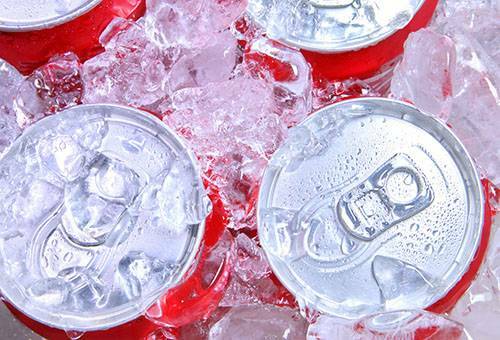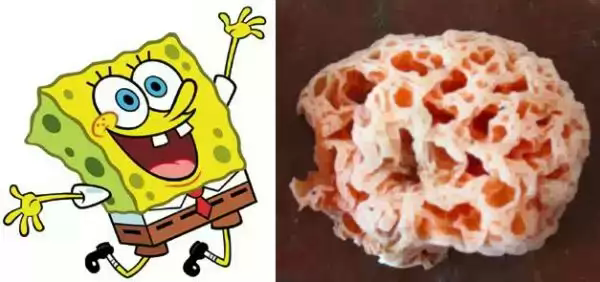It is almost impossible to avoid the formation of scale on the walls of devices designed for boiling water. Therefore, even owners of a water installation with a filtration system should know how to clean the kettle of scale. Ignore lime scale can not, because it's not just an aesthetic lack of dirty yellow or gray-white color, but also a serious blow to the functionality of the device. A dense layer of scale reduces the speed and quality of heat transfer. The product of stainless steel may not react to this, but an electric appliance, in which the heating element is primarily affected, will not withstand the overloads and break after some time. When boiling water in an enameled teapot, this also goes unnoticed - the liquid heats up more slowly, which at times increases the gas consumption.
Another important point - if you do not remove the scale in the teapot, then its particles, breaking off as a result of physical and chemical reactions, will constantly fall into the finished drink. Accumulation of such elements in the body will not lead to anything good.

Descaling instructions
Descaling at home involves thorough cleaning with specialized tools. It can be ready-made preparations that are in a huge range presented in hardware stores or affordable household products that can be found in every kitchen.
advice Paradoxically, a professional tool in this case is not the best choice. Most often it does not cope with the task, but it significantly affects the further quality of boiled water. This is due to the complex chemical composition of tap water in modern cities, which leads to unpredictable results.
To get rid of the scale in the kettle, you can use one of the seven most effective approaches:
- Soda treatment .Soda solution allows you to remove even the most dense formations. We fall asleep in a container five tablespoons of powder, fill it with water, bring it to a boil and let it simmer for at least 20 minutes. It is not recommended to test the soda with an electric kettle.
- Cleaning with citric acid .A universal approach that helps to remove the thin and medium patina. Suitable for all types of teapots. Even an electrical appliance, in which a glass or plastic body, can be safely subjected to such treatment. Pour into a functional capacity a tablespoon of citric acid, pour it with water and bring to a boil. It is not necessary to boil one solution for a long time, it is better to take a little more citric acid and repeat the approach. If the layer of lime is too dense, you can put a little citric acid powder on a damp plastic sponge or brush and gently rub.
- Application of vinegar .With the help of apple or table vinegar it is possible to soften a very dense coating, which accumulated for months. This is a rather aggressive technique and at home it can be used only in the most extreme cases. We fill the container one third with vinegar, top up with water. The solution should be boiled on low heat for at least half an hour. The smell of vinegar while filling the entire room, you need to take care of airing.
- Elimination of plaque using peel .If you put in the kettle lemon, apple or potato cleaning, pour water and boil, and then leave until cooling, you can wash loose lime formations.
- Brine based tool .When combating scale in the home, tomato or cucumber pickle helps well. It needs to be poured into a container and boiled for several minutes. However, getting rid of the specific smell of the product is then quite difficult. In some cases, even treatment with soda or citric acid does not help.

- Processing of Coca-Cola .Carbonated drinks are harmful to health, but they are used in everyday life."Sprite", "Phantom" or "Coca-Cola" can be washed not only plaque on the walls of the kettle, but also an old rust on the plumbing. Before cleaning the kettle from scaling in a similar way, it is necessary to release all the gas from the drink, or the bubbles will cover the entire kitchen. The product is simply poured into the kettle and brought to a boil. With "Coca-Cola" and "Phantom" it is better not to risk when processing transparent instruments, here is more suitable "Sprite".
- Intensive comprehensive approach. Provides consistent application of several chemical methods.
Despite the apparent aggressiveness of such products, their impact on the walls and elements of the kettle will be more gentle than mechanical treatment. Lime plaque is forbidden to wipe off with a metal washcloth, regardless of the degree of strength of the material from which the device is made.

An effective and safe technique for removing old
formations. To remove the scale in a teapot, which is a few millimeters thick and accumulated for months, it will be necessary to resort to a complex method. First, the container is washed and cleaned with soda, after which a solution of soda is boiled in it. The liquid is drained, but the kettle is not washed. Pour into it a solution of citric acid. You need to do it from the calculation of a teaspoon of powder per liter of water. Ideally, the combination of the two components should lead to the formation of bubbles, this indicates the correct course of chemical reactions. After treatment with soda and lemon, vinegar is applied.
At the end of the procedure, the kettle is recommended to boil three times, each time changing the water to fresh. This will remove the aftertaste of soda and vinegar, get rid of the peeling lime. Such an aggressive way is absolutely not suitable for electrical appliances!
. No matter how much benefit such approaches do not bring, they can not be abused. Chemicals gradually erode not only the scale, but also the walls of the device, which reduces its functionality and increases the risk of formation of harmful compounds.



